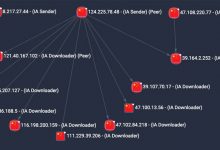Why Neurodiversity Is The Key To Unlocking Future Security
In today’s cybersecurity world, the call for innovation and resilience has never been more urgent. Yet, amidst the pursuit of cutting-edge technologies and strategies, a critical aspect often overlooked is the power of neurodiversity.
As organizations strive to cultivate inclusive environments and provide equal opportunities for neurodivergent individuals, questions abound on how this diverse talent pool can contribute to cybersecurity. This article aims to explore these questions comprehensively, shedding light on why embracing neurodiversity isn’t just a moral imperative but a strategic advantage in safeguarding digital assets.
By delving into the significance of neurodivergent individuals in the cybersecurity field readers will gain valuable insights into the importance of fostering inclusivity and understanding neurodiversity’s role in shaping the future of cybersecurity.
What is Neurodiversity in Cybersecurity?
Neurodiversity in cybersecurity refers to the recognition and inclusion of individuals with diverse cognitive profiles, including conditions such as autism, ADHD, dyslexia, and others, within cybersecurity teams. These individuals bring unique perspectives, skills, and talents to the table, enhancing the overall effectiveness of cybersecurity operations.
“Seeking out neurodiverse teammates in hiring and recognizing and building around their strengths can be a vital asset to anticipating an adversary’s moves and uncovering potential solutions to problems before they arise,” said Gunnar Peterson, CISO at Forter.
Neurodiverse individuals often exhibit exceptional logical and methodical thinking, attention to detail, and cognitive pattern recognition skills. For example, they can hyperfocus on tasks, giving complete attention to specific issues for prolonged periods, which is invaluable in identifying and mitigating security threats. Their ability to engage deeply in their work ensures that even the smallest anomalies are detected and addressed swiftly.
Moreover, many neurodiverse individuals thrive on repetitive tasks and routines, finding comfort and even excitement in long, monotonous processes. This makes them well-suited for roles that involve continuous monitoring and analysis of security data. Their high levels of concentration and persistence allow them to stay on task until solutions are found, ensuring thorough and effective problem-solving.
Creativity is another significant benefit that neurodiverse individuals bring to cybersecurity. Their unique, nonlinear thinking enables them to approach problems from different angles and develop innovative solutions. This creativity is crucial for devising new methods to counteract evolving cyber threats. For instance, a neurodivergent team member might come up with an unconventional but highly effective way to secure a network that others might overlook.
Furthermore, neurodiverse individuals often possess strong reasoning skills and keen awareness, contributing valuable insights into cybersecurity strategies. Their ability to think outside the box allows them to anticipate potential issues that others might miss, enhancing the overall security posture of an organization.
In terms of teamwork, neurodiverse individuals respond well to inclusive environments. A diverse team, comprising various cognitive profiles, tends to react better to challenges and fosters a more innovative and productive atmosphere. When neurodivergent individuals are included and valued, team morale improves, leading to higher overall performance and productivity.
Challenges Faced by Neurodiverse Individuals in Cybersecurity
Neurodiverse individuals face several challenges in the workplace that can impact their ability to thrive, despite their unique strengths. For example, sensory sensitivities common in conditions like autism can make traditional office environments overwhelming due to bright lights, loud noises, or crowded spaces. This can lead to increased stress and decreased productivity. Communication barriers are another significant challenge, as some neurodivergent individuals may struggle with social cues and norms, making it difficult for them to participate effectively in team meetings or collaborative projects.
For instance, someone with ADHD might find it challenging to maintain focus during long meetings, potentially missing critical information. Additionally, rigid workplace structures and a lack of flexibility can hinder neurodiverse employees, who may require different accommodations, such as varied working hours or remote work options, to perform optimally.
These challenges highlight the need for inclusive workplace practices that recognize and support the diverse needs of neurodiverse individuals, enabling them to contribute their valuable skills more effectively.
How to Create Neurodiverse-Friendly Work Environments
Creating a neurodiverse-friendly work environment involves considering several key factors to support and accommodate the unique needs of neurodivergent individuals. Here are the steps to create such an environment:
Sensory: Addressing the sensory environment is crucial. This means ensuring that the workplace is comfortable regarding lighting, noise, and overall ambiance. For example, providing noise-canceling headphones, adjustable lighting, or quiet workspaces can help neurodivergent employees focus better and reduce sensory overload.
Timely: A timely environment means allowing sufficient time for tasks and avoiding unrealistic deadlines. Clearly communicating timeframes and allowing flexibility can reduce stress. For instance, giving employees enough time to complete tasks without last-minute rushes can improve their productivity and job satisfaction.
Explicit: Communication should be clear and explicit. This involves providing detailed instructions and avoiding ambiguous language. For example, instead of saying, “Get this done soon,” specify, “Please complete this task by 3 PM tomorrow.” This clarity helps neurodivergent individuals understand expectations and reduces anxiety.
Predictable: Creating a predictable environment can help reduce anxiety and improve focus. This includes having regular schedules and clear procedures. For instance, if meetings are scheduled at consistent times and agendas are shared in advance, neurodivergent employees can prepare better and feel more secure.
Social: Fostering a supportive social environment means recognizing that not everyone may be comfortable with the same level of social interaction. Offering structured social activities and respecting individual preferences can create a more inclusive workplace. For example, providing clear invitations to social events with detailed information about what to expect can help neurodivergent employees feel more comfortable.
Additionally, implementing a “traffic-light” system with colored cards or post-it notes (green for willing to interact, yellow for maybe, and red for needing to focus) can help manage social interactions effectively and respect individual boundaries. By incorporating these STEPS, organizations can create an inclusive and supportive work environment that leverages the unique strengths of neurodivergent employees, ultimately enhancing overall productivity and innovation.
Training Programs: Providing specialized training and development programs can help neurodivergent individuals thrive in cybersecurity roles. This includes offering tailored training sessions that address their unique learning styles and strengths.
For example, using visual aids and hands-on activities can enhance understanding and retention. Mentorship programs where experienced employees guide neurodivergent staff can also be beneficial, offering personalized support and career development advice. Moreover, continuous learning opportunities, such as workshops on the latest cybersecurity trends and technologies, can keep neurodivergent employees engaged and up-to-date with industry advancements.
Read Ahead
“Once we start to remove what those barriers are, the way that we do things, our culture of understanding and our bias of conditions, then we can start to be more inclusive and welcome a more diverse workforce,” said Foxcroft.
By harnessing the unique strengths of neurodivergent individuals, organizations can unlock a wellspring of creativity, focus, and unconventional problem-solving. It’s a future where cybersecurity teams aren’t just well-equipped, but exceptionally prepared – a future where “thinking differently” becomes the key to defending against the unthinkable.
So, what steps will you take to create a more inclusive cybersecurity workforce? The answers may well determine the future security of our digital world.





